
Rig Veda: The Heart of the Rishis
In my search for the real meaning of the Rig Veda, I feel I have at last come
upon a scholar and artist, S.K. Ramachandra Rao (1927-2006), who possessed a
deeper consciousness and has opened what I feel to be truest evaluation of the
hymns and how we may approach them. I have several of the books in this series,
but within Rigveda-Darshana, Volume Thirteen, The First Hymn to Agni [see
below], he has articulated everything I had come to feel after reading many of
the other of the available texts on the Rig Veda [see list]. Therefore I will
here paraphrase what Professor S.K. Ramachandra Rao has to say, and include my
own thoughts and comments.
Over the years I have come to feel that because Indian writers are born into it,
they have an easier grasp of these subtle ideas. Thus I have preferred to read
Indian authors — thanks to the Exotic India website which ships many books
worldwide not available elsewhere. I offer my research on the Rig Veda not as a
scholar or as an authority, but only as a sincere seeker of truth who hopes to
share her heartfelt efforts.
My synthesis of what Professor S.K. Ramachandra Rao reveals is that the poet
Seers who composed the Rig Veda never meant their verses to be read, translated
or interpreted in a linear or scholarly way. The Rig Veda has multiple layers of
meanings which will only be revealed to those who have earned higher
consciousness and who have allowed the Oneness within to expand to a greater
Fullness, which is the literal meaning of the Sanskrit word
brahman. The Rig Veda is meant for
those who have offered themselves on the crucible of the path Home, who have
purified the mind and endured a thousand thorns in the Heart.
I remain sincerely grateful to all those scholars east & west whose research I
have read, whose heroic efforts to translate have made invaluable contributions
to my understanding. However the Rig Veda is not a puzzle for clever, albeit
brilliant university professors who may be seeking a means to win accolades and
tenure. The Rig Veda will only be fully understood by the true seeker. In
ancient times adepts would have been the true scholars, the guardians of eternal
wisdom knowledge.
I have concluded that perhaps there never will be an accurate translation of the
Rig Veda in this cycle of time, the Kali Yuga. Who in our frantic disconnected
era possesses the consciousness of Dirghatamas, Vishvamitra, Angiras, Vashistha,
and other Rishis? However for those who dive deeply into their verses, there is
an endlessly expanding treasure of knowledge and wisdom that has the power to
change and lift up the now fragmented human consciousness back into our original
state. It may be that these verses serve as mirrors of the One and each will
find their own meaning in these gems of early Vedic Sanskrit. The Satya Yuga and
Liberation from Samsara (Moksha)
awaits those who have the dedicated Will to persevere the unfathomable mysteries
nested hidden in the Rig Veda.
In the general introduction, Professor S.K. Ramachandra Rao [known as S.K.R]
asserts that from ancient days through modern times all the efforts to lift the
veil of mystery from the word Veda only “served to thicken the mist.” As many
other scholars have agreed, there is no agreement. The English translations I
have been able to acquire are all remarkably, astonishingly, and sometimes quite
humorously different.
S.K.R. says that Indian tradition considers Veda to be “unoriginated” and
therefore eternal. Veda is “not the product of human reason or intelligence.”
The idea here is that beneath all temporal ephemeral ‘appearances’ there exists
one primordial foundational metaphysical truth and this can be approached
through Veda. As S.K.R. says, “…the Veda is always there, has always been there,
and always will be there, because it was not produced at any point in time or
anywhere specifically.”
According to S.K.R. the word Veda can mean to know and to understand, to be or
become, to obtain or achieve, to inquire into or investigate. The Veda teaches a
technique that is beyond “the transactional world” and that this technique is
beyond differentiated five-sense perception contradicting observation or sensory
apprehension and reasoning. It is verbal testimony that succeeds “where either
observation or reasoning cannot provide correct knowledge.”
Not a language in the usual sense of the term...
Veda is eternal “in the sense that its origin is coeval with creation, and that
it will last as long as creation lasts.” The Sanskrit language of the Rig Veda
is not the Sanskrit language of other later texts. Even in the era of the
grammarian Panini, who lived perhaps some time in the 6th century BCE, Panini
himself pointed out that the early Vedic language is quite different from the
Sanskrit that followed. According to S.K.R., Panini makes the point that the
language of the Rig Veda was “in fact not a language in the usual sense of the
term. It was not designed for communication or transaction.”
The Sanskrit word CHHANDAS expresses
Vedic usage. S.K.R.:
“Chhandas has a double meaning: it
means something that causes delight and what is concealed or hidden. Words used
are delightful, but they hide real intention. The latter is frequently referred
to in the Rig Veda as ‘secret’. The language of the Veda is highly symbolic.
Words do not mean what they mean in common transaction. The hidden meaning
becomes evident or known only after reflection, after spiritual practice or
tapas, and after one becomes himself the truth behind the meaning. Hence it is
called Veda.”
The above quoted paragraph by S.K.R. eloquently expresses why the Rig Veda
continues to bewilder university scholars who have not Become, who have yet to
reach the consciousness of the great ancient Rishis. Their scholarly
translations, no matter how erudite and grammatically perfect, are mired in
linear thinking that serves to obfuscate and obscure the deeper inner meaning.
Perhaps the Rishis knew and foresaw our pitiable future in the Kali Yuga,
floundering in miasmas of amnesia.
S.K.R. explains the more profound implications of the tradition that the Rig
Veda verses are not man made, but rather revealed by God. The Sanskrit word used
to describe this is APAURUSHEYA,
meaning impersonal, not human or divine, not
Purusha, thus not composed by anyone,
human or divine: ‘The Vedas are said to be impersonal as they were revealed to
sages (Rishis) and not composed by them. They are held eternal and authorless.’
[A Concise Dictionary of Indian Philosophy, by John Grimes, Indica.]
Some schools consider the Veda as the breath of God, while others hold it as the
revealed word of God, made by God. More often these sacred verses are understood
to have eternally been ‘there’ and only perceived by the Rishis. S.K.R.: “Their
[the Rishis] especial eligibility for this remarkable prowess comes from
austerity and penance (tapas), which
render them more than merely human (apaurusheya).
They are able to reveal to others what has been revealed to themselves.”
The verses in the Rig Veda are also termed hymns or mantras. A mantra is ‘a
sacred word or phrase of spiritual significance and power and comes from the
verb-root MAN = to think; thus a
mantra is that which saves the one who reflects’ [John Grimes]. One sage-seer
speaks of the mantras being ‘chiselled’ in the heart. A modern version of this
process has been elucidated in the very famous and well worth reading book ‘The
White Goddess’ by Robert Graves.
S.K.R. enumerates three classes: (1) those who carve out (chisel) the mantras
within themselves; (2) those who articulate them and thus communicate them to
others; and (3) those who understand their right meaning, importance, and
“significance of the true spirit underlying the creation and articulation of the
mantras.”
The mantras, the verses of the hymns are formed in the hearts of the sages and
“such formation is totally free from the limitations of the human mind.” There
is a Sanskrit term for this process which means that the mantras “appeared in
the human heart on their own, as if by divine impulsion. They are expressions of
truth (ritasya). The sages only saw
them in their own hearts.”
The Heart in Sanskrit is HRIDAYA and
it is not the physical heart, but rather the core essence of that Oneness
dwelling within all living beings and is simultaneously ubiquitous. The symbol
of the Heart is a cave, or in Sanskrit
GUHA. In an excellent and wonderful study of the Rishi Dirghatamas by
Professor Satya Prakash Singh, the idea of the Rig Veda mantras forming in the
Heart of the Rishis is revealed.
Professor Singh quotes the Katha Upanishad and the Chhandogya Upanishad as both
texts speak of the cave in the heart, which is a tiny space ‘the most secret and
sacred place in the whole of existence.’ The Katha Upanishad [II.1.1] gives an
account of ‘a cave in the higher half of the highest region where the liberated
soul is said to remain drinking RITA (a word of multi-layered meanings such as
Truth, right, luminous) in the company of the Supreme Being.’ The Chhandogya
Upanishad [VII.1.1-4] talks of the Heart as containing the Sun & Moon, the
Heavens & Earth. In other words, the Oneness, the entirety of creation and all
eternal Wisdom Knowledge can be reached within our Heart.
The sage Dirghatamas in his Rig Veda hymn I.164.39 observes that the mantras
‘lie originally in the immortal and highest heaven in which rest all gods, that
he who does not know the source of the mantras, can gain nothing from them and
that those who know this truth, rest there.’
Dirghatamas’ hymn I.164, known as the ASYA VAMIYA SUKTAM, is said to contain
great hidden knowledge and is very difficult to translate. Only the enlightened
may understand. In verse 45 the sage offers this very profound understanding:
The Sanskrit words used in the Rig Veda have four levels of meaning. Only the
first level of meaning is accessible to most, the other three levels of the word
(VAK) are ‘hidden in the cave’.
Professor Singh: “Obviously, the mantra directs our attention to the essence of
the word beyond its spoken form, the latter being only its exterior. In fact,
the root of a word goes as deep as the human awareness of the reality. Man’s
linguistic capability runs parallel to his awareness… Beyond the vocal form,
observes Dirghatamas, there are three grades of it which only deep thinkers can
understand. …If the roots of a tree lie underground, the hidden phases of the
word (VAK) rest in the cave…" [in the Heart].
Thus again we understand why mere scholarship is not enough, and can never be
enough to understand, much less translate into English the Rig Veda. Another
insightful comment from Professor Singh is that the Heart is the "seat of the
psyche…the source of spiritual visions." Here VAK as the word is understood as
that which is also "observing, or self-luminous…VAK here is not spoken but seen,
and not only what is seen but the seeing as well. Obviously VAK at this stage is
not only pre-vocal, but also pre-ideational…the self-luminous vision of Reality
itself."

Descriptions begin to fail us as we move closer and deeper into the meaning of
the Rig Veda mantras. However, there is a great joy in the journey and the
sublime proximity of these energies which seeping flowing merging into us reveal
something higher, something that changes us, elevates us into the eternal Lost
Realms of the ancient Rishis and the previous Cycles of Time. I invite you to
come along on this journey of Self-discovery, to find your own meanings in the
mystery of the Rig Veda. Let us awaken with the Rishis and merge our
consciousness with theirs, for they live inside each and every one of us.
Remember that the Rig Veda is the first of Sanskrit texts and the source of all
that followed.
The Rig Veda is subtle, an elusive enigma, the unending mystery. The Rig Veda is
the Howling Luminescence [X.125.1], nuclear plasma spanda prakasha within the
layers of Life and Beyond, pearls of gold strung in the Hearts of the Seers,
echoes of the Cosmic Fire eternally pulsating through galaxies, the Myriad
Worlds. God's Love.

Rigveda-Darshana, Volume Thirteen, The First Hymn to Agni, by S.K. Ramachandra
Rao; Kalpatharu Research Academy, Shanarapuram, Bangalore, 2004.
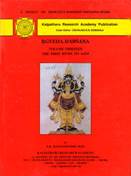
Life and Vision of Vedic Seers, 2, DIRGHATAMAS, by Professor Satya Prakash
Singh, Senior Fellow and In-charge, Vedic research Center, New Delhi; Standard
Publishers, New Delhi, 2006.
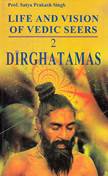
Both these books are available at Exotic India.com
***
My sincere humble gratitude to S.K.R.
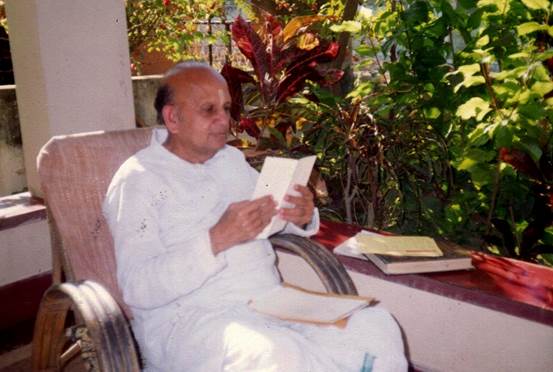
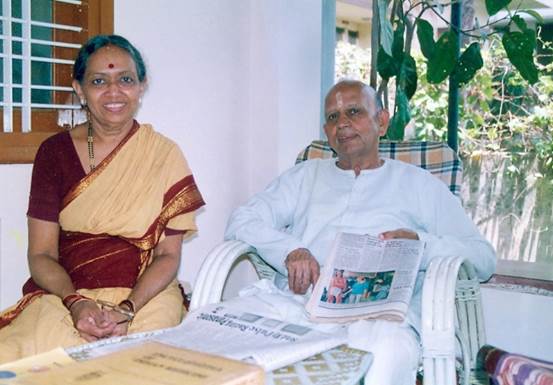
S.K. Ramachandra Rao with his wife from the website www.profskr.com/
***
The Kashmir Shaivite Swami Lakshmanjoo:
"In the beginning of the Kali Yuga...the secret of Shaivism was residing in
their heart. ...they would explain it without writing it, they didn't write the
theory of Shaivism at all. It was in their brain. They would explain it...! And
it would penetrate those to whom it was explained. And they were the same,
meaning they became the same..."
www.universalshaivafellowship.org/shivaratri2013/#.UT-DkI6Sj8s
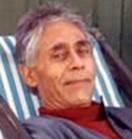
| Questions
or comments about articles on this site: Email V. Susan Ferguson: Click Here |
Copyright© V. Susan Ferguson All rights reserved. |
Technical questions or
comments about the site: Email the Webmaster: Click Here |